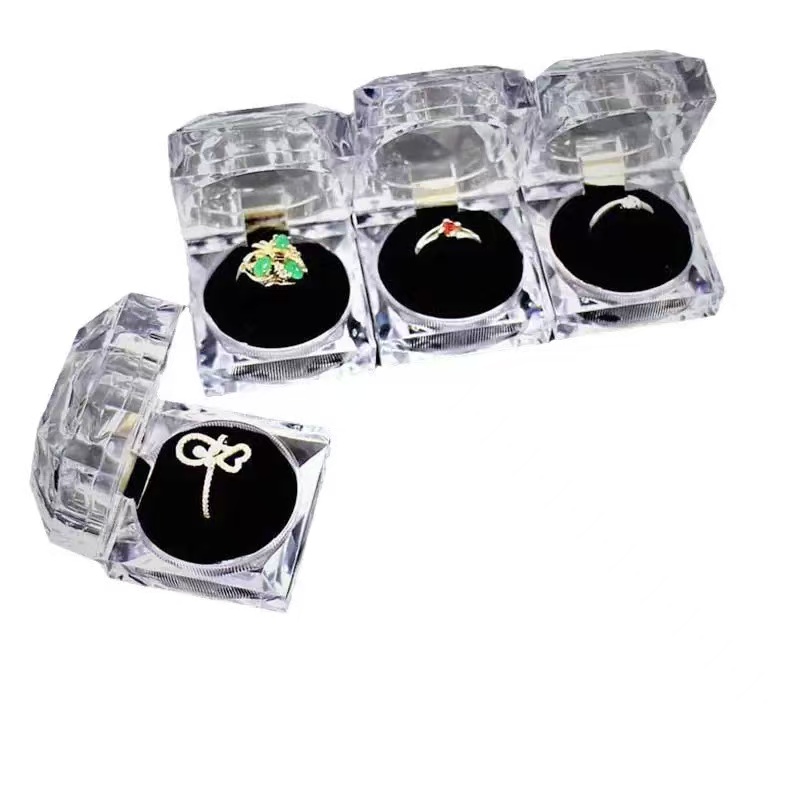As a professional jewelry packaging manufacturer, SIRI Packaging provides an in-depth analysis of the advantages and disadvantages of paper, plastic, velvet, wood, and leather jewelry boxes—helping brands choose the best option based on budget, sustainability, and brand image.
Welcome to SIRI Packaging’s Professional Insights
As a jewelry box manufacturer with over 20 years of experience, we understand that packaging is more than protection—it’s a reflection of your brand identity and a key part of the customer experience.
Every day, our clients ask:
“Which jewelry box material best suits our brand?”
To answer this important question, we’ve prepared a detailed comparison of the most common jewelry packaging materials from a manufacturer’s perspective. This guide will help you make informed, strategic decisions that align with your brand story, budget, and sustainability goals.
1. Paper Jewelry Boxes: The Go-To for Cost-Effectiveness & Creativity
Paper is one of the most popular and versatile materials for jewelry packaging, widely used in the form of grey board paper, cardstock, or specialty papers.
Pros:
- Cost-Effective & Scalable: Paper is ideal for startups and fast-fashion jewelry brands due to its low raw material cost and easy large-scale production. With thoughtful color coordination and meticulous craftsmanship, paper jewelry boxes deliver a premium look and feel at a highly affordable price.
- High Printability: Its surface is highly adaptable to foil stamping, UV coating, embossing, and screen printing, allowing for precise logo reproduction and customized branding.
- Eco-Friendly & Lightweight: Paper is recyclable, biodegradable, and often sourced from FSC-certified materials, appealing to eco-conscious consumers while reducing shipping costs.
- Creative Freedom: Paper boxes can be die-cut into any shape, offering flexibility for innovative and distinctive designs.
Types of Paper Jewelry Boxes:
- Rigid Cardboard Core: Enables versatile shapes and sizes without high mold costs. Commonly covered with coated paper, textured paper, or art paper for a luxurious appearance.
- Plastic Core with Paper Wrap: Combines a plastic base (created via molding) with a paper exterior, delivering both durability and a premium surface finish.
For more details, see our guide on plastic-core jewelry boxes.
Cons:
- Lower Durability: Susceptible to moisture and crushing if not laminated or reinforced.
- Moderate Protection: Offers limited shock absorption for fragile, high-value jewelry.
- Perceived Value: May feel less luxurious compared to wood or leather.

Best For: Fast-fashion jewelry, mid-to-low-end accessories, promotional gifts, and e-commerce packaging.
2. Leather & PU Leather Jewelry Boxes: The Epitome of Luxury and Texture
Leather jewelry boxes—whether genuine or synthetic (PU)—instantly enhance perceived value, creating a luxurious, high-end impression.
Pros:
- Luxurious Feel: The smooth, supple texture of leather exudes sophistication and prestige, ideal for luxury brands.
- Exceptional Durability: Genuine leather is long-lasting and wear-resistant; high-quality PU leather also offers impressive tear resistance.
- Enhanced Protection: Typically paired with velvet or suede-lined interiors to cradle and protect jewelry pieces.
- Refined Aesthetic: Leather surfaces can be customized with debossed logos, contrast stitching, or metallic accents.
Cons:
- High Cost: Genuine leather requires greater investment in both material and craftsmanship.
- Maintenance Needs: Leather requires conditioning; synthetic versions may peel or crack over time.
- Ethical & Environmental Considerations: Real leather involves animal-derived materials, while PU options are less eco-friendly.
- Heavier Weight: Adds shipping cost compared to lighter materials like paper.

Best For: Diamonds, engagement rings, high-end watches, and brand anniversary or commemorative editions.
3. Velvet Jewelry Boxes: Classic Luxury with Soft-Touch Appeal
Pros:
- Luxurious Texture: Velvet instantly enhances the tactile and visual appeal, creating a rich unboxing experience.
- Protective Cushioning: Soft interiors protect delicate jewelry from scratches and damage.
- Timeless Elegance: Suitable for traditional or romantic jewelry collections.
Cons:
- Dust Attraction: Velvet tends to collect lint easily.
- High Maintenance: Requires careful handling and storage.
- Limited Sustainability: Most velvet is synthetic and non-biodegradable.

Best For: High-end jewelry collections, boutique displays, and luxury gift packaging.
4. Wooden Jewelry Boxes: The Fusion of Nature and Craftsmanship
Wooden jewelry boxes combine natural beauty with premium craftsmanship, offering an artisanal and enduring presentation.
Pros:
- Unique Character: Each piece of wood features a distinctive grain pattern, symbolizing authenticity and artistry.
- Durability & Longevity: Structurally robust and capable of lasting for generations with proper care.
- Eco Appeal: Perceived as natural and healthy when sourced responsibly.
- Custom Branding: Can be laser-engraved or inlaid for personalized detailing.
Cons:
- Higher Cost & Weight: Wood is expensive to source and increases shipping costs.
- Environmental Sensitivity: Can warp or crack in extreme humidity or dryness.
- Longer Production Time: Requires more craftsmanship compared to paper or plastic alternatives.

Best For: Artistic jewelry, antique pieces, high-end pearl accessories, and men’s jewelry collections.
5. Plastic & Acrylic Jewelry Boxes: The Modern, Transparent Display Option
Plastic and acrylic boxes have gained popularity for their modern aesthetic and display clarity, especially in retail environments.
Pros:
- Crystal-Clear Display: High transparency provides 360° product visibility—perfect for showcases and photography.
- Lightweight & Waterproof: Easy to clean and maintain; resistant to moisture and dust.
- Affordable Mass Production: Suitable for cost-sensitive, large-scale retail use.
Cons:
- Low-Perceived Luxury: Cheap plastic may diminish brand image.
- Scratch-Prone: Acrylic surfaces can easily mark over time.
- Environmental Drawbacks: Most plastics are non-biodegradable, conflicting with eco-conscious trends.

Best For: Low-cost jewelry, e-commerce display packaging, and in-store retail counters.
Summary: How to Choose the Best Material for Your Jewelry Brand
| Material | Key Advantages | Main Drawbacks | Best Keywords |
|---|---|---|---|
| Paper | Low cost, lightweight, customizable, eco-friendly | Less durable, basic feel | Eco-friendly jewelry box, custom paper jewelry box |
| Leather/PU | Luxurious texture, durable, enhances brand image | High cost, requires maintenance | Luxury jewelry box, premium packaging |
| Velvet | Elegant, soft, classic aesthetic | Dust-prone, non-eco | Velvet jewelry box, high-end jewelry packaging |
| Wood | Natural, sturdy, long-lasting | Expensive, heavy | Wooden jewelry box, sustainable packaging |
| Plastic/Acrylic | Clear visibility, modern, waterproof | Scratches easily, not eco | Clear jewelry box, acrylic display box |
Final Recommendation:
Your material choice should balance brand positioning, product value, target audience, and budget. The most effective jewelry packaging is not only protective—it’s an expression of your brand story.
About SIRI Packaging
SIRI Packaging is a professional jewelry box manufacturer with over two decades of experience in custom packaging design and production. We provide end-to-end solutions—from concept design and material selection to mass production and branding finishes.
Whether you need an eco-friendly paper box, a modern acrylic showcase, or a luxurious leather presentation box, we deliver packaging that elevates your jewelry and reinforces your brand’s market presence.
Contact us today to discuss your next custom jewelry packaging project and discover how SIRI Packaging can help you bring your brand vision to life.





